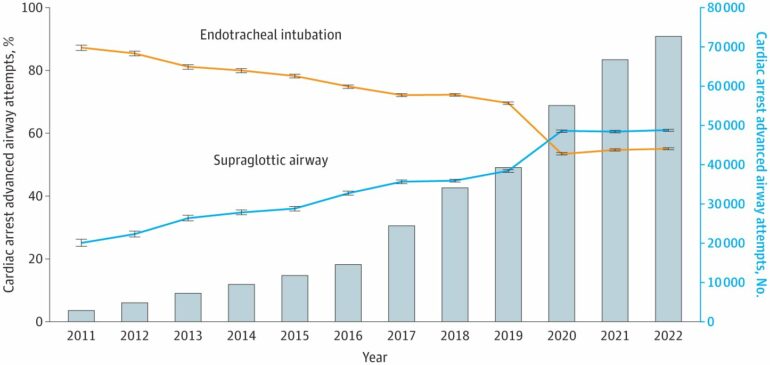A new study from The Ohio State University College of Medicine shows that the way paramedics help people breathe before they get to the hospital is changing.
The research, published in JAMA Network Open, looks at how emergency medical services (EMS) in the United States manage their patients’ airways. Airway management is used in life-threatening conditions such as cardiac arrest, trauma and respiratory failure.
“Paramedics and emergency medical technicians are usually the first to provide lifesaving medical care for critically ill patients,” said Henry Wang, MD, lead author and clinical professor of emergency medicine. “It’s important to understand EMS airway management practices so hospitals know the best method to transition patients from the ambulance and manage any potential complications.”
The study analyzed EMS data from the ESO Data Collaborative, one of the largest EMS electronic health systems in the United States. The research team looked at all EMS patient encounters from 2011 to 2022 where advanced airway management was attempted, including endotracheal intubation (ETI) and supraglottic airways (SGA).
For more than 40 years, ETI—a difficult technique where a flexible tube is placed through the mouth and vocal cords into the patient’s lungs—has been the dominant technique to help patients breathe. But in the past 10 years, there has been a sizable increase in the use of SGA—simpler devices that sit above the vocal cords—for cardiac arrest patients. Now, most cardiac arrests are managed with SGA rather than ETI.
“SGA is considered to be a simpler, faster airway management technique,” Wang said. “You can achieve similar ventilation results with less training.”
Between 2011 and 2022, there were 47.5 million EMS activations for medical emergencies. Of those, there were 444,041 attempts to use advanced airway management, including 343,312 cardiac arrest events, 79,358 non-cardiac arrest medical events, and 21,371 trauma events.
Among cardiac arrest patients during the study period, ETI attempts dropped from 87.3% to 55.1% while SGA attempts rose from 25.1% to 61%. Cardiac arrest SGA attempts were higher than ETI from 2020 to 2022. For non-cardiac arrest and trauma patients, there were similar trends, although to a lesser extent.
“This is the first formal study confirming that paramedic practice has changed to favor SGA over ETI,” Wang said. “It is important to understand national EMS clinical practices to better allocate emergency resources and improve training.”
Ongoing research through the Pediatric Prehospital Airway Resuscitation Trial led by Wang is working to determine the best method of advanced airway management in children.
More information:
Henry E. Wang et al, Longitudinal Changes in Emergency Medical Services Advanced Airway Management, JAMA Network Open (2024). DOI: 10.1001/jamanetworkopen.2024.27763
Provided by
The Ohio State University
Citation:
Study highlights changes in how paramedics approach airway management (2024, August 26)



